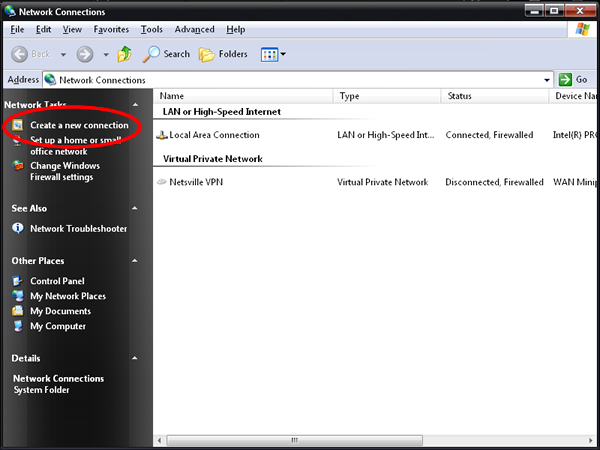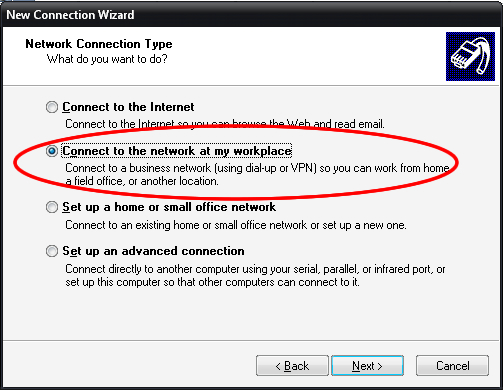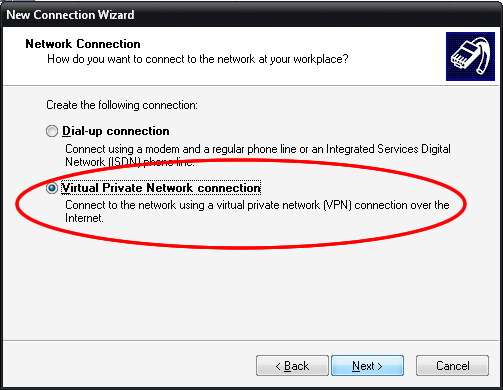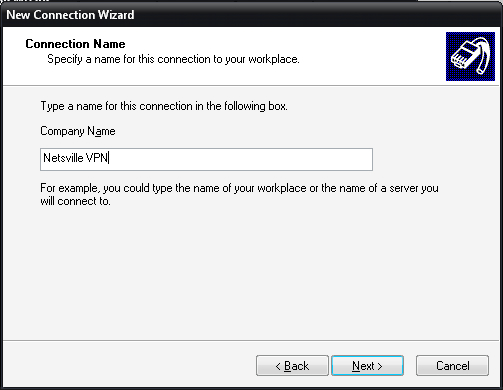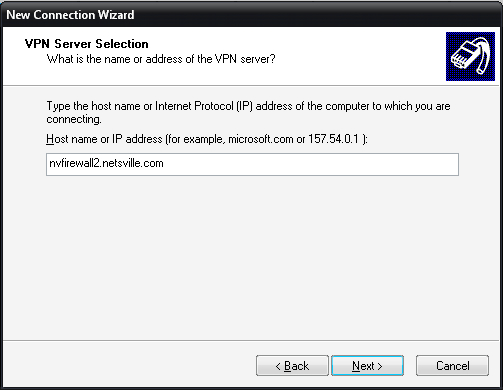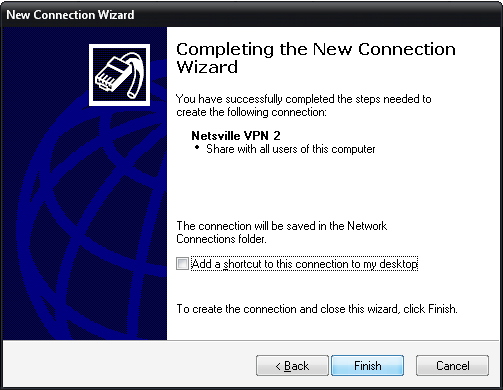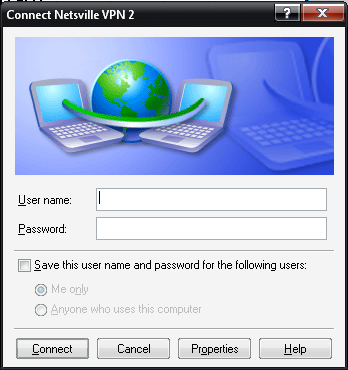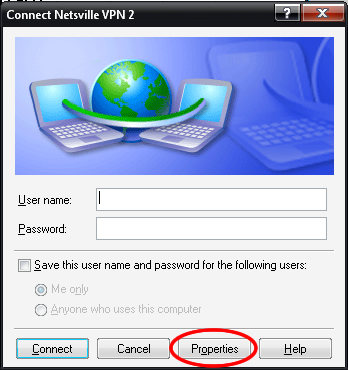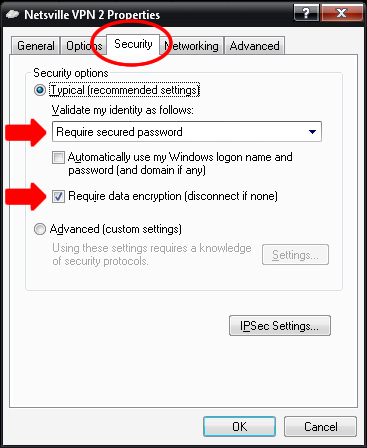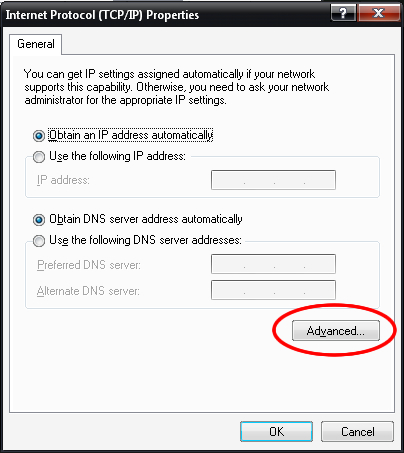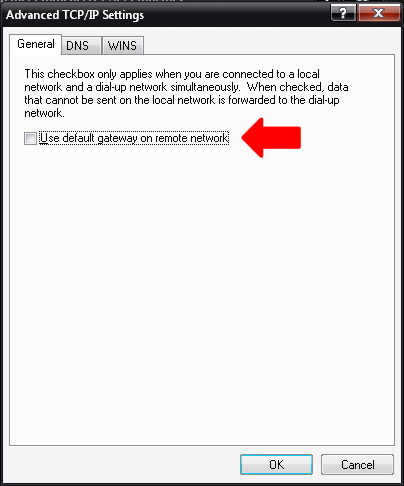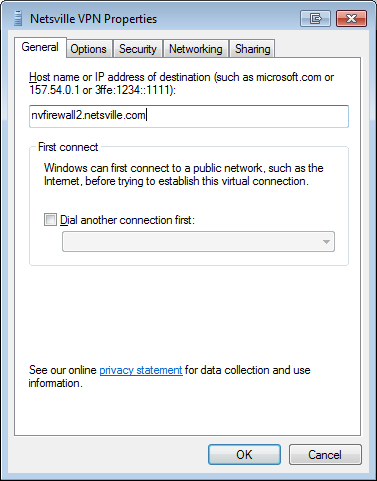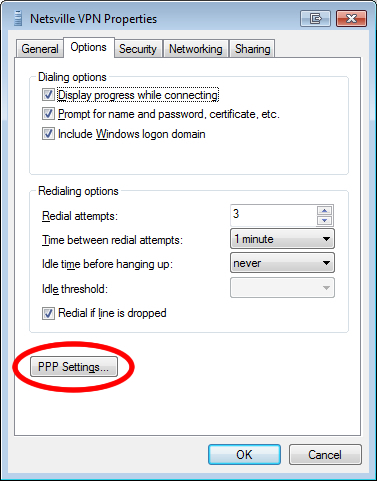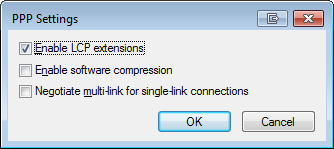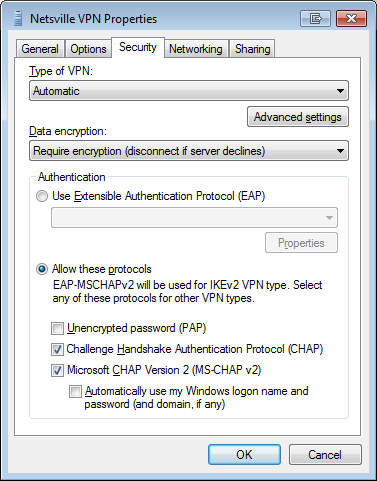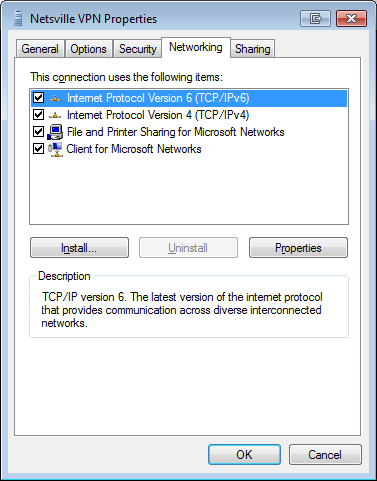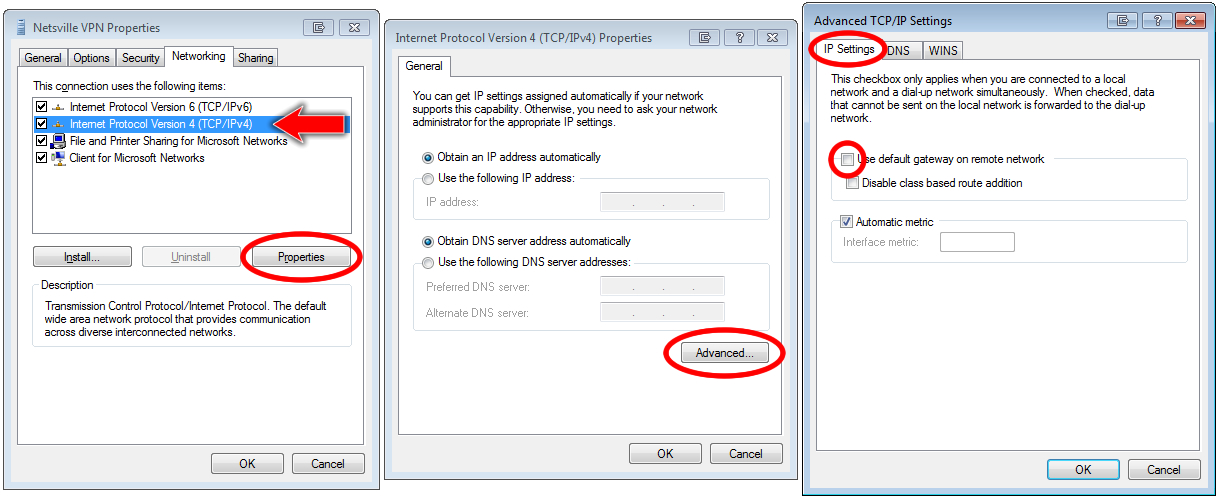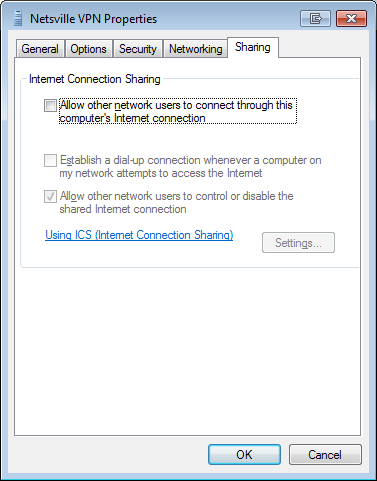Difference between revisions of "VPN"
Jump to navigation
Jump to search
(Created page with "= Windows XP = You are only allowed to hit Netsville IPs through the VPN. # Go to the Control Panel and open Networking #* Start > Settings > Control Panel > Networking #* or #...") |
m |
||
| Line 25: | Line 25: | ||
When you are finished creating the connection, Windows will automatically pop up the "Connect" dialogue box. | When you are finished creating the connection, Windows will automatically pop up the "Connect" dialogue box. | ||
| + | |||
[[File:Vpn_7.jpg]] | [[File:Vpn_7.jpg]] | ||
Revision as of 18:02, 1 December 2011
Contents
Windows XP
You are only allowed to hit Netsville IPs through the VPN.
- Go to the Control Panel and open Networking
- Start > Settings > Control Panel > Networking
- or
- Start > Run > ncpa.cpl
- In the left sidebar under "Network Tasks" click "Create a new connection"
- Click the "Next" button to begin the wizard
- Choose "Connect to the network at my workplace" and click the "Next" button
- Choose "Virtual Private Network connection" and click the "Next" button
- Enter a name in the "Company Name" box
- Enter Netsville's VPN IP or hostname in the "Host name or IP address" box
- Click the "Finish" button to create your new connection and close the wizard
When you are finished creating the connection, Windows will automatically pop up the "Connect" dialogue box.
- Click the "Properties" button
- Click the "Security" tab
- Click the "Networking" tab
- Click "TCP/IP" to highlight it
- Click the "Properties" button
- Click the "Advanced" button
- Uncheck "Use default gateway on remote network"
Vista and Windows 7
Setting up the Connection
- Go to Start > Control Panel > Network and Sharing Center.
- Select "Set up a new connection or network".
- Select "Connect to a workplace".
- Select "Use my internet connection (VPN)".
- Enter the following:
- Internet address: nvfirewall2.netsville.com
- Destination name: Netsville VPN
- Destination name is just to remind you what this VPN is for.
- The three boxes should be unchecked.
- Click "Next".
- Enter your username and password.
- Click "Connect".
- Quickly click "Cancel" because you need to set up additional things.
Setting VPN Settings
Go back to the Network and Sharing Center.
- Select "Connect to a network".
- The icon for Networking should pop up a selection screen; highlight your VPN connection, right-click, and select "Properties".
We'll go tab-by-tab:
General
Options
Click the "PPP Settings" button:
Security
Networking
Now you need to keep the VPN from disconnecting your local internet.
- Highlight "Internet Protocol Verson 4 (TCP/IPv4)".
- Click the "Properties" button.
- Click the "Advanced" button.
- Uncheck "Use default gateway on remote network" in the "IP Settings" tab.
Sharing
Note for Netgear Routers
If your connection will not let you through and you have a Netgear router, you might also need to disable the SPI firewall.
- Boot up your web browser and enter the IP for your router (probably 192.168.1.1).
- Enter the admin user/pass for the router.
- Under "Advanced", select "WAN Setup".
- Uncheck "Disable SPI Firewall".
- Click "Apply" and wait for the router to do its thing.
Connecting to the VPN
Go back to the Network and Sharing Center.
- Select "Connect to a network".
- The icon for Networking should pop up a selection screen; select your VPN connection, then click the "Connect" button.
General Troubleshooting
Some things to try
- Other gateway devices have this SPI Firewall (Stateful Packet Inspection), disable it under Advanced or Security settings.
- Also under Security settings, you may have a setting for "PPTP pass-through", make sure this is enabled.
- Upgrade your gateway (Linksys, Netgear) to the latest firmware.
- Try from a DOS prompt:
TELNET nvfirewall2.netsville.com 1723. If you get a new window to come up (black screen), that means the port is open (that's a good thing!). If not, and it just sits there with Connecting to nvfirewall2.netsville.com..., that means you are getting blocked by some kind of firewall and you need to fix that before trying anything else. One of our customers had this problem and solved it by upgrading the firmware of their Linksys WRT54G.
Resources
- http://social.technet.microsoft.com/Forums/en-US/w7itpronetworking/thread/32c5e5b5-b2a2-43d3-b702-9cd0c8ef2c67
- http://superuser.com/questions/31027/windows-7-vpn-stops-web-browser
- http://homecommunity.cisco.com/t5/Wireless-Routers/Can-t-VPN-through-WRT54G/m-p/216473?comm_cc=US&comm_lang=en#216467
- http://compnetworking.about.com/od/vpn/ht/newvpnwindowsxp.htm
